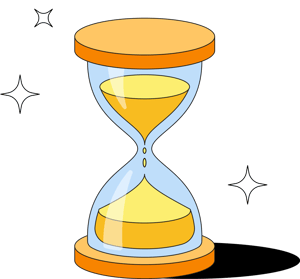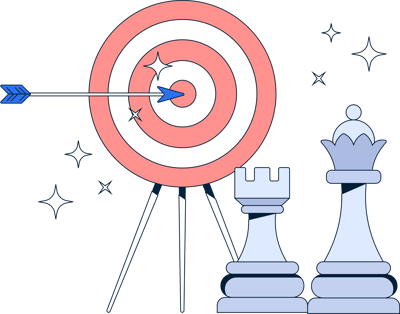
Planning Effective Meeting Cadence For Teams [+ Bonus Tips]
.jpg)
Key takeaways
- Choosing the right meeting cadence is an important element of successful meeting management.
- Different meetings, teams, and environments require different meeting cadences.
- Adapting common meeting cadence best practices to your specific needs will ensure your strategy is successful.
Meeting cadence is the frequency with which you schedule meetings. Scheduling an effective meeting cadence is essential in achieving high productivity and avoiding zoom fatigue and disengagement.
In many workplaces, it can be challenging to walk the line between excessive meetings and employee disconnection. This is especially true in remote work environments.
While there is no universal schedule that will fit all types of meetings, there are best practices you should be aware of when setting the pace of your team’s meetings. In this post, we gathered the most common meeting cadences and what meetings they’re most appropriate for.
Most common meeting cadences
Different types of meetings often command different meeting schedules, but there are no absolute rules you need to follow. The right approach is the one that works best for you. Below are some of the most common meeting frequencies and the meeting types they are most often associated with.
Daily meetings
These are usually short and focused on the practicalities and goals for the workday. They involve quick status updates, allocating support, or resolving any immediate blockers to pending action items.
Examples of daily meetings are:
- Daily stand-up meetings
- End-of-shift daily check-ins
Weekly meetings
A weekly meeting cadence has a broader focus than daily meetings. It helps attendees align on what work they will complete during the week, what deliverables they can expect, and what issues might slow down the progress.
Weekly meetings are helpful for project managers and team leaders to coordinate different facets of a complex project and share updates. Weekly meetings are also opportunities for teams, especially remote ones, to interact and stay connected. For managers, it’s the time scheduled to interact 1-on-1 with their direct reports.
Examples of weekly meetings are:
- Weekly team meetings
- Project team meetings
- Revenue or goals updates
- One-on-one meetings
- End-of-week team hangouts
Hold better one-on-ones
Bi-weekly
Meetings that follow a bi-weekly cadence focus less on interaction and operations and more on project and business updates.
Examples of bi-weekly meetings are:
- Start/end of sprints for agile teams
- Department updates
- One-on-one meetings for cross-team collaboration
- Campaign launches
- Leadership team meetings
- Management meetings
Monthly meetings
Here we start moving into more strategic meetings, where decisions are made on a longer-term basis and do not involve day-to-day issues or company-wide events.
Examples of monthly meetings are:
- Company updates
- Performance updates
- Monthly company gatherings
- Keynote events or meetings with guest speakers
- Board meetings
Quarterly meetings
Quarterly meetings usually focus on strategy, reporting results, and future goal setting.
Examples of quarterly meetings are:
- Company/business updates
- Brainstorming for upcoming campaigns and initiatives
- Reporting on KPIs and setting new goals
Annual meetings
Annual meetings usually take place at the end of the year and offer you and your respective team the opportunity to reflect on all the hard work and effort that has gone into the past few months.
Examples of quarterly meetings are:
- End-of-year round-up and recap
- Team achievements and praise
- Goals for the coming year
Now that we know the most common meeting cadences, what should we consider when selecting the right one for our needs?

Selecting the right cadence for your team
Set the meeting goal and outcome
When understanding how to set an effective meeting cadence for any particular objective, ask yourself and your team a few questions as you build your plan. Selecting the proper meeting cadence becomes easy when you understand the meeting goal. You could ask questions such as:
- What will be the meeting agenda?
- What are we trying to achieve with the meeting?
- Do we need detailed check-ins on the next steps and progress?
- Is this meeting part of regular project management, or is it more of a business review or all-hands meeting
Do attendees realistically have enough time to follow the proposed meeting rhythm?
Ensure all attendees add value to the meeting
Inviting only those that contribute to the desired outcome is part of a healthy strategy when planning an effective meeting cadence.
While it may feel uncomfortable to omit some people, keeping the attendee list to the minimum ultimately favors everyone. Those who join will find discussion and decision-making faster and more effective, and those that don’t can invest time in focused work.
Moreover, people should be encouraged to reject meeting invitations when they feel they aren’t needed.
When determining who should be invited to a meeting, ask yourself the following questions:
- Does this person contribute to the planning and discussion?
- Is this person part of the decision-making process? Do they need to take meeting notes? Do they have an active role?
- Will this person bring significant value to the objective of the meeting?
- Is this a waste of time for this person? Would their time be better spent on something else?
- Is their calendar already full?
Factor in the communication styles
To plan an effective meeting cadence, you want to know how effectively your team communicates. Individual communication styles differ. Some meetings may be long-winded, go off-topic, or over time, while others are likely to be brief and to the point.
To help determine how often you will schedule a specific meeting and how to structure it correctly, ask yourself the following questions:
- What is the team size?
- Does the team typically run over time when discussing topics?
- Does the team run out of time and stretch the conversation to the maximum available time?
- Does the team set actionable tasks in this kind of setting?
- Are the results of action plans and next steps considered during follow-ups?
Assess current meeting cadence
A great way to ensure you have an effective meeting cadence is through trial and error. The right meeting cadence will evolve as projects, teams, and situations evolve. When assessing the current meeting cadence, ask the following questions:
- Are projects running smoothly, and would it be beneficial to spread out meetings?
- Would team members get more support with more frequent meetings?
- Would the meeting efficiency improve if it was shorter?
- Are team members disengaged, and could they benefit from more interaction time?
Identify high-priority meetings
Knowing the importance of the meeting’s goal will help you decide how often the team should meet to discuss progress and how much time you should devote to these conversations.
This consideration is more complex than it may seem at first glance. High priority shouldn’t always correlate to a more frequent meeting cadence. This approach might add confusion, stress, and the feeling of being micromanaged on projects that are already complex and time-consuming.
On the other hand, agile teams that follow the scrum methodology see value in having daily stand-ups, even though they aren’t always a true business priority.
Switch to asynchronous communication where appropriate
Are all of your meetings truly necessary? Some meetings are essential for exchanging real-time information, progress, and ideas. However, often many meetings can take place via asynchronous communication. Be ruthless when identifying meetings that can occur asynchronously, as this will help you save time for critical interactions that need to occur in person.
Ask yourself:
- Could this topic be discussed via Slack (or other channels)?
- Could this project be worked on through a shared document (Notion, Miro, or Google Docs)?
- Would switching to asynchronous work positively impact the team?
- Do people have to interrupt their focused work to join this meeting?
Gather participant’s feedback and insights
After real-time meetings, follow up with participants to garner feedback and suggestions. Asking your meeting attendees how frequently you should hold specific meetings is sensible and should be an ongoing practice. As the team, business, and projects evolve, so should the meeting cadence. Always keep an open channel of communication.
Ask yourself:
- When was the last time I got feedback on a recurring meeting?
- Would discussing process and cadence for a few minutes at the beginning or end of each session help improve?
- Do attendees know how to reach you to discuss concerns or ideas, and is it clear to them that they are encouraged to do so?
- Does your meeting agenda and template provide enough time for attendees to express themselves?

Effective meeting cheat sheet
Meeting cadence is only one small part of running a healthy remote workforce.
Over 50 million meetings happen weekly in the US, according to Zippia’s research, with about 70% of those sessions are considered unproductive. Unproductive meetings can harm employee wellbeing, and work satisfaction, cause stress and anxiety, leading to employee burnout and harming overall business growth. Moreover, they are expensive, with ineffective meetings losing big companies $100 million a year.
Below are 15 proven tips to ensure your meetings are productive. Together with the right cadence choices, these tips will be crucial in improving your productivity and workplace effectiveness.
Before the meeting
1. Establish the purpose of the meeting
Before hosting a business meeting, you should ensure that you have a specific purpose and goal. If you don’t, cancel it.
2. Set a meeting length
To ensure an efficient meeting, keep an eye on the clock and remind everyone of the meeting time limit. This practice will also help maintain focus and avoid stress caused meetings going over time or off-topic.
3. Go in with an agenda
A meeting agenda determines the meeting flow and topics of discussion. You should send the agenda to participants in advance, so everyone has time to prepare.
A meeting agenda should contain the following:
- Meeting objectives
- Topics to discuss
- Questions to answer
- Actions to take
4. Keep the meeting attendees list small
Limiting the number of meeting attendees to those fundamental to the meeting’s success will ensure everyone participates actively and prevent time waste and meeting fatigue.
To avoid feelings of exclusion among those not invited, share meeting notes with the rest of the team once the session is over.
5. Assign roles to participants
Aside from choosing key speakers, keep everyone else engaged by delegating particular tasks to the rest of the attendees. Tasks could include:
- Icebreaker topics
- Note-taking
- Meeting moderator
- Timekeeper
During the meeting
6. Kick-off with an icebreaker
Starting the meeting with a 5-minute icebreaker acts as a transitional buffer and will help everyone get warmed up for a free-flowing discussion.
7. Emphasize achievements, not mistakes
A healthy meeting culture should foster open and transparent communication that is constructive and supportive. Avoid using meetings to reprimand team members, as the tension could negatively affect morale. On the other hand, showing appreciation for achievements boosts motivation and productivity.
8. Consider multi-layered voting
The more complex a topic is, the harder it is for decision-makers to form conclusive action points. Team voting can make the decision-making process easier:
- Ask each participant to write one action item or idea down
- Ask everyone to vote on their top priority or favorite idea
- Ideas and items with the most votes go to the next round
- Repeat the process until you’re left with one idea or a prioritized list
9. Act as a spokesperson for attendees
Although you should not control the content of a meeting, you can suggest how participants could clarify or elaborate on certain points. As a meeting facilitator, you can ask for clarifications and relatable examples if you feel the topic might take a technical turn and leave attendees feeling lost or confused.
10. Encourage participation
Not everyone feels comfortable speaking up during team meetings. Instead of pressuring those more introverted participants by putting them on the spot, allow them to express themselves the way they find most comfortable, such as chat messages or emojis.
11. Use the parking lot technique
During discussions, people naturally interrupt each other, go off-topic, and ask side questions. If you see the conversation veering away from the planned agenda, getting it back on track without dismissing potentially important information is important.
Use the parking lot technique by announcing to the participants that you are going to “park” this topic. You can then ask the participant to write their points down in a shared document that you can return to later.
12. Try silent discussions and problem-solving
After raising a question or problem, ask each participant to write down their ideas in silence. The team can submit their ideas via the chat function, a digital whiteboard, or a shared document. The meeting host can present the ideas, and the team can discuss their favorites.
After the meeting
13. Get a post-meeting pulse check
Getting a pulse check at the end of a meeting can help gauge whether participants understood the topics discussed, how they feel about them, and whether a follow-up meeting is necessary.
Ask team members to use a 1-5 scale, a traffic light approach, or even emojis to show how they feel after a meeting.
14. Come out with an action plan
A meeting without actionable outcomes is a waste of time for everyone involved. At the end of the meeting, set small and realistic action items assigned to specific people with deadlines on when and how they should be delivered.
15. Send a round-up message
Use the meeting notes, agenda items, and action points to summarize the discussion and course of action. Be sure to thank the meeting participants for their attendance and contributions.
Boost your meeting experience with Deel
Deel’s HR Slack plugins are essential for distributed teams looking to build a healthy and productive meeting culture.
1-on-1s by Deel makes it easy to organize and manage your weekly check-in meetings via the Slack app. The plugin helps attendees align on talking points, give and receive real-time feedback, and track meeting history to identify trends in performance or mood.
With Pulse Surveys by Deel, meeting facilitators can gauge participants’ feelings and feedback after a meeting to improve their meeting management skills. Create survey automation using pre-made templates, set up completion reminders, and enable team members to respond directly in Slack.
Learn more about Deel’s HR Slack plugins, or book a demo today to get started.




